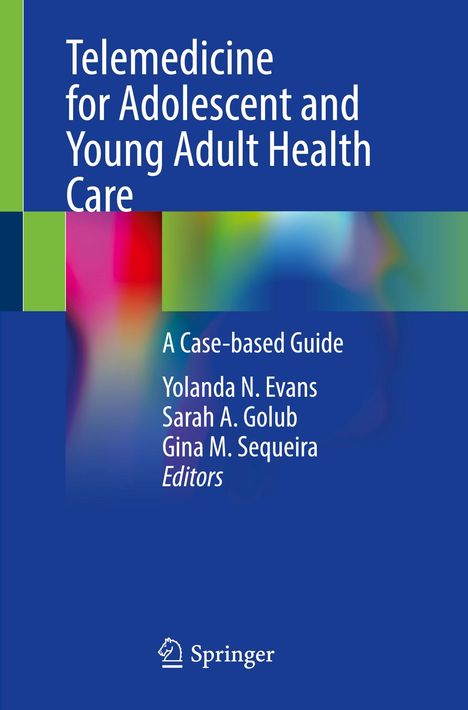Telemedicine for Adolescent and Young Adult Health Care, Kartoniert / Broschiert
Telemedicine for Adolescent and Young Adult Health Care
- A Case-based Guide
(soweit verfügbar beim Lieferanten)
- Herausgeber:
- Yolanda N. Evans, Gina M. Sequeira, Sarah A. Golub
- Verlag:
- Springer International Publishing, 05/2024
- Einband:
- Kartoniert / Broschiert, Paperback
- Sprache:
- Englisch
- ISBN-13:
- 9783031557590
- Artikelnummer:
- 11875697
- Umfang:
- 196 Seiten
- Nummer der Auflage:
- 2024
- Ausgabe:
- 2024
- Gewicht:
- 342 g
- Maße:
- 235 x 155 mm
- Stärke:
- 11 mm
- Erscheinungstermin:
- 23.5.2024
- Hinweis
-
Achtung: Artikel ist nicht in deutscher Sprache!
Klappentext
While there are general texts on telemedicine and guidelines on the use of telemedicine in pediatrics, there are no texts focused specifically on the provision of health care to adolescents and young adults using telemedicine. Adolescents and young adults have more unique health care needs than both adults and children, including the need to receive developmentally appropriate services and care that may be provided in settings outside of the standard clinical office (such as school-based care). In addition, in most US states, adolescents are capable of providing consent for some but not all medical care, highlighting the critical importance of providing services in a manner that adheres to regulations around consent and confidentiality.
Telemedicine for Adolescent and Young Adult Health Care offers readers case-based content written by experts in the fields of adolescent medicine and telemedicine. There are a variety of chapters that include anemphasis on equity, diversity, and inclusion and will include local and federal rules, regulations, and considerations for ensuring privacy in the modern electronic health record. The first chapter offers a general overview and history of telemedicine. The next one focuses on telemedicine and epidemics. The chapters in the middle detail a variety of topics related to telemedicine such as confidentiality, equity, telemedicine and learners, school-based care, telemedicine in primary care and ambulatory consultative care. The book closes out by emphasizing additional populations such as youth involved in the juvenile carcel system, homeless / housing insecure, foster involved youth and youth with developmental delay. It is a valuable resource for adolescent medicine specialists, pediatricians, primary care physicians and any other professional who treats the adolescent population.


